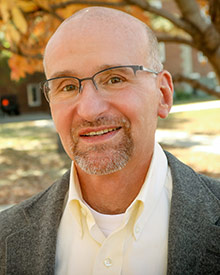
Dr. Jim Vaux
Areas of Expertise
- Construction Management
- Organizational Behavior
Bio
Jim Vaux’s work experience is central to his teaching and helps to inform and bring relevance to his construction management classes using real-world examples. Before starting a career in academia, Jim spent 25 years in both the commercial and residential construction industry in roles ranging from superintendent to project manager and business owner. He holds a professional certificate as a Certified Professional Constructor (CPC) from the American Institute of Constructors. Washington State University is where he earned a master’s and doctorate. He began teaching at UNK in 2014, moving into the chair position of the Industrial Technology Department in 2015. Jim’s research primarily involves relationship conflict and how it affects performance and profit in the construction industry. He has written about construction management internships, relationship conflict in construction, and using supplementary materials in concrete within peer reviewed journals, such as The Professional Contractor, Conflict Resolution, and Journal of Engineering and Management.
Education
Ph.D., Supporting Areas of Emphasis: Organizational Behavior, Psychology, Engineering Management, Management, Washington State University
M.S., Engineering & Technology Management, Washington State University
Areas of expertise and research
- Construction management internships
- Relationship conflict in construction
- Using supplementary materials in concrete
Why did you go into teaching?
While working on my master’s, one of my instructors asked me to teach the class while he was doing a two-week international teaching engagement. He knew my background in construction and had brought students from one of his undergraduate classes to the job site where I was a superintendent. It was during that two-week time period that I thought, ‘I really like this.’
What do you like about teaching?
I enjoy watching students connect with the material and apply it in real-world applications. As I use relevant real-world examples to help explain concepts and principles in the classroom, the lights go on for students and they see how principles connect with what is done outside the classroom in the construction industry.









